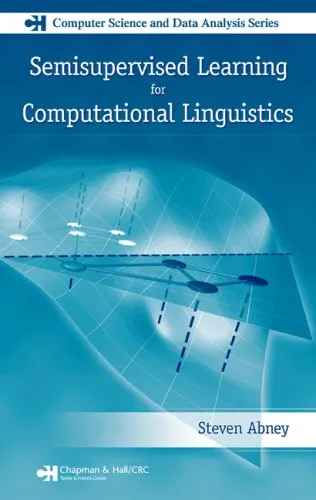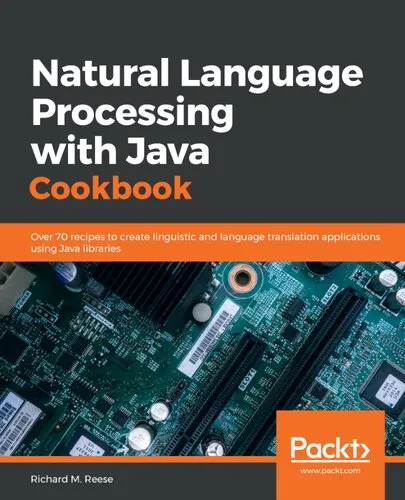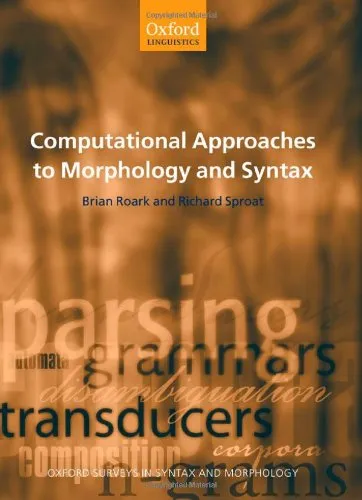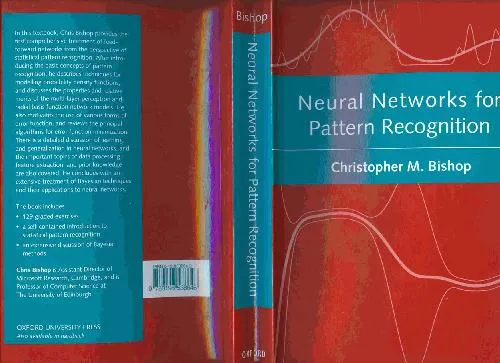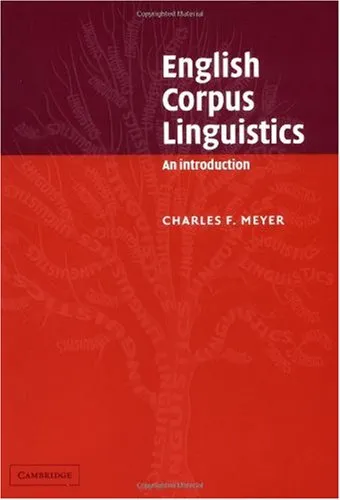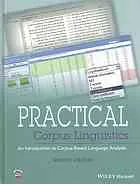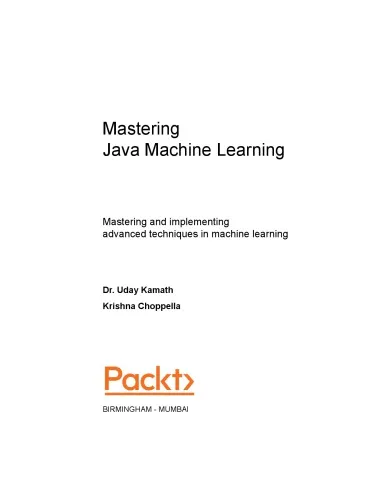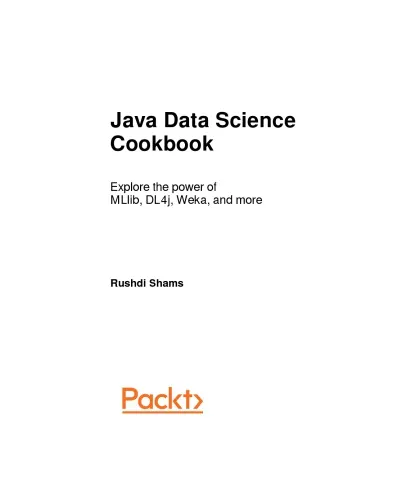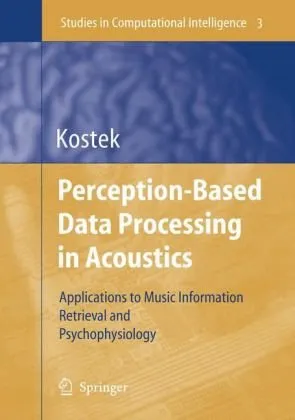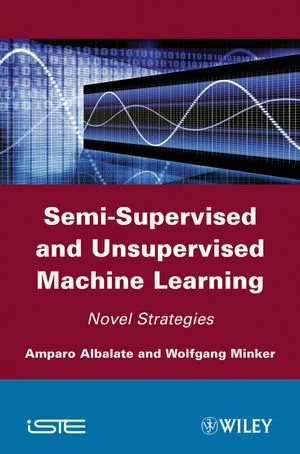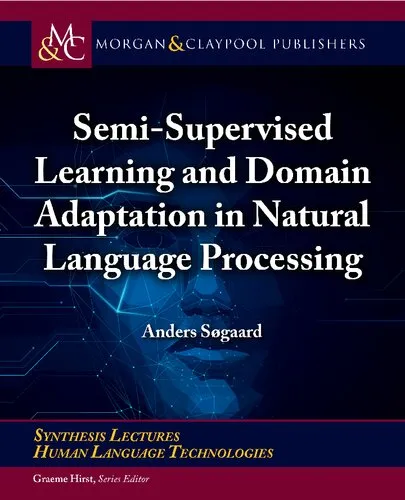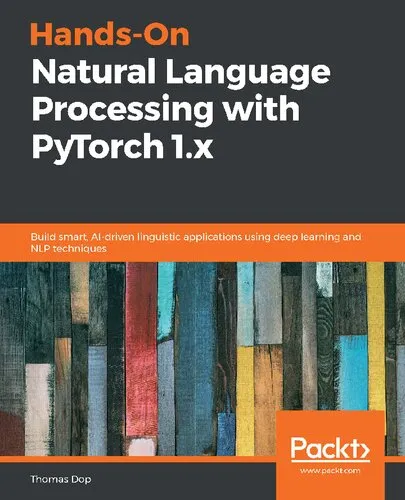Semisupervised Learning for Computational Linguistics (Chapman & Hall Crc Computer Science & Data Analysis)
3.8
بر اساس نظر کاربران

شما میتونید سوالاتتون در باره کتاب رو از هوش مصنوعیش بعد از ورود بپرسید
هر دانلود یا پرسش از هوش مصنوعی 2 امتیاز لازم دارد، برای بدست آوردن امتیاز رایگان، به صفحه ی راهنمای امتیازات سر بزنید و یک سری کار ارزشمند انجام بدینکتاب های مرتبط:
معرفی کتاب "Semisupervised Learning for Computational Linguistics"
کتاب Semisupervised Learning for Computational Linguistics نوشتهی استیون ابنی کتاب شامل یک سری مباحث اساسی و کاربردی در زمینهی یادگیری نیمهنظارت شده (Semisupervised Learning) است. این شیوه یادگیری، در فضایی بین یادگیری نظارتشده (Supervised Learning) و یادگیری بینظارت (Unsupervised Learning) قرار دارد و تلاش میکند با استفاده از دادههای برچسبگذاریشده و برچسبگذارینشده، مدلهای قدرتمندی برای پیشبینی و تحلیل بسازد. در این کتاب، مباحث اساسی مثل استفاده از الگوریتمها و مدلهای متنوع مانند Generative Models، Graph-Based Methods، و Self-Training تشریح شدهاند. علاوه بر توضیح مفاهیم نظری، نویسنده به کاربردهای عملی این تکنیکها در تحلیل مورفولوژیک، دستهبندی متون، ترجمه ماشینی و سایر حوزههای زبانشناسی محاسباتی پرداخته است. یکی دیگر از ویژگیهای برجستهی این اثر، توضیح دقیق نقاط قوت و ضعف مدلهای نیمهنظارتشده است؛ این امر به خوانندگان کمک میکند تا بتوانند در پروژههای مختلف به شکلی هدفمند و استراتژیک از این روشها بهره ببرند. "یادگیری نیمهنظارتشده در زبانشناسی محاسباتی به ما اجازه میدهد تا از محدودیتهای دادههای برچسبگذاریشده فراتر رفته و تواناییهای تحلیلهای خود را گسترش دهیم." "هرچند دادههای بینظارت بهظاهر کماهمیت هستند، اما در مدلهای یادگیری نیمهنظارت شده میتوانند معادلات پیچیده را تسهیل کنند." در عصر حاضر، پردازش دادههای زبانی به یکی از بزرگترین چالشهای هوش مصنوعی و علوم داده تبدیل شده است. یادگیری نیمهنظارتشده به عنوان یکی از روشهای نوین تحلیل داده، میتواند بهشکل قابل توجهی کارایی مدلهای مرتبط با زبانشناسی محاسباتی را افزایش دهد. این کتاب، علاوه بر ارائه مباحث نظری، کاربردهای عملی و واقعی این روشها را در زمینههای مختلف تحلیل زبانی نشان میدهد. از طرفی، نیاز به ابزارهای پیشرفته در زمینهی Natural Language Processing در حال افزایش است. کتاب Semisupervised Learning for Computational Linguistics مسیری واضح و عملی برای حل این نیازها ارائه میدهد و میتواند به پژوهشگران و فعالان این حوزه کمک کند تا مدلهای نوآورانهای ایجاد کنند. به طور خلاصه، این کتاب پلی میان نظریههای پیشرفته و کاربردهای عملی ایجاد کرده است و به همین دلیل در میان آثار مشابه، جایگاه ویژهای دارد. خلاصهای از کتاب
نکات کلیدی کتاب
نقلقولهای معروف از کتاب
چرا این کتاب اهمیت دارد؟
Introduction to Semisupervised Learning for Computational Linguistics
In the evolving field of natural language processing (NLP) and computational linguistics, handling vast volumes of unstructured linguistic data requires innovative approaches and techniques. "Semisupervised Learning for Computational Linguistics" dives deep into the intricate balance between supervised and unsupervised methods, presenting a comprehensive framework for leveraging unlabeled data alongside labeled data to enhance machine learning algorithms for linguistic tasks. This book, written for researchers, practitioners, and students, explores the theoretical foundations and application-driven practices that empower the future of linguistic data analysis.
Detailed Summary of the Book
The book is structured to guide the reader through the fundamentals of semisupervised learning in computational linguistics, elucidating how this paradigm bridges the gap between supervised learning, which relies heavily on labeled datasets, and unsupervised learning, which examines patterns in unlabeled data. It emphasizes how semisupervised techniques are particularly useful in scenarios where labeled data is scarce but unlabeled data is abundant—a common occurrence in language processing tasks.
Key chapters delve into topics such as self-training, co-training, and manifold regularization, tying these methodologies to real-world linguistic problems like machine translation, sentiment analysis, text classification, and parsing. The book also focuses on algorithmic advancements and their implications for language modeling, featuring detailed discussions about deep learning and its semisupervised applications. Readers are equipped with practical knowledge, from theoretical underpinnings to hands-on implementation strategies using artificial intelligence techniques.
Through step-by-step explanations, visual demonstrations, and case studies, the book fosters an understanding of how semisupervised learning methods contribute to tasks like speech recognition, named entity recognition, and even in discovering semantic relationships in unstructured text. By the end of the book, readers gain a holistic view of not just the mechanics of semisupervised learning, but also its transformational impact on computational linguistics.
Key Takeaways
- Introduction to the concept of semisupervised learning and its unique advantages in NLP.
- In-depth exploration of algorithms including self-training, co-training, and graph-based methods.
- Practical discussions about implementing semisupervised methods in real-world projects.
- Analysis of challenges and pitfalls when applying these techniques in noisy or sparse linguistic datasets.
- Insights into the future directions of semisupervised learning for computational linguistics, including integration with deep learning systems.
Famous Quotes from the Book
Throughout "Semisupervised Learning for Computational Linguistics," readers will find thought-provoking insights that shed light on the importance of blending human ingenuity with machine learning methods. Here are some notable quotes:
"The power of semisupervised learning lies in its ability to find order in chaos, leveraging the structure hidden within the abundance of unlabeled data."
"Computational linguistics is not just about understanding language; it is about teaching machines to think linguistically while navigating real-world ambiguities."
Why This Book Matters
The significance of "Semisupervised Learning for Computational Linguistics" extends far beyond its pages. As language becomes increasingly vital in human-computer interactions, the demand for efficient, scalable, and practical solutions for processing massive datasets continues to surge. This book addresses that need by demystifying semisupervised learning, providing a critical roadmap for researchers, developers, and enthusiasts looking to tackle the complexities of linguistic data.
Additionally, the book's application-oriented approach makes it an essential resource for those working in industries where linguistic data is pivotal, such as AI-driven customer service, automated translation services, and sentiment analysis in social media platforms. By equipping its audience with theoretical knowledge and practical tools, this book empowers its readers to advance the boundaries of machine learning and computational linguistics. It matters not just because of the content it offers, but because of the ongoing conversation it sparks regarding the role of AI in fostering better communication and understanding.
دانلود رایگان مستقیم
شما میتونید سوالاتتون در باره کتاب رو از هوش مصنوعیش بعد از ورود بپرسید
دسترسی به کتابها از طریق پلتفرمهای قانونی و کتابخانههای عمومی نه تنها از حقوق نویسندگان و ناشران حمایت میکند، بلکه به پایداری فرهنگ کتابخوانی نیز کمک میرساند. پیش از دانلود، لحظهای به بررسی این گزینهها فکر کنید.
این کتاب رو در پلتفرم های دیگه ببینید
WorldCat به شما کمک میکنه تا کتاب ها رو در کتابخانه های سراسر دنیا پیدا کنید
امتیازها، نظرات تخصصی و صحبت ها درباره کتاب را در Goodreads ببینید
کتابهای کمیاب یا دست دوم را در AbeBooks پیدا کنید و بخرید
1139
بازدید3.8
امتیاز0
نظر98%
رضایتنظرات:
3.8
بر اساس 0 نظر کاربران
Questions & Answers
Ask questions about this book or help others by answering
No questions yet. Be the first to ask!
